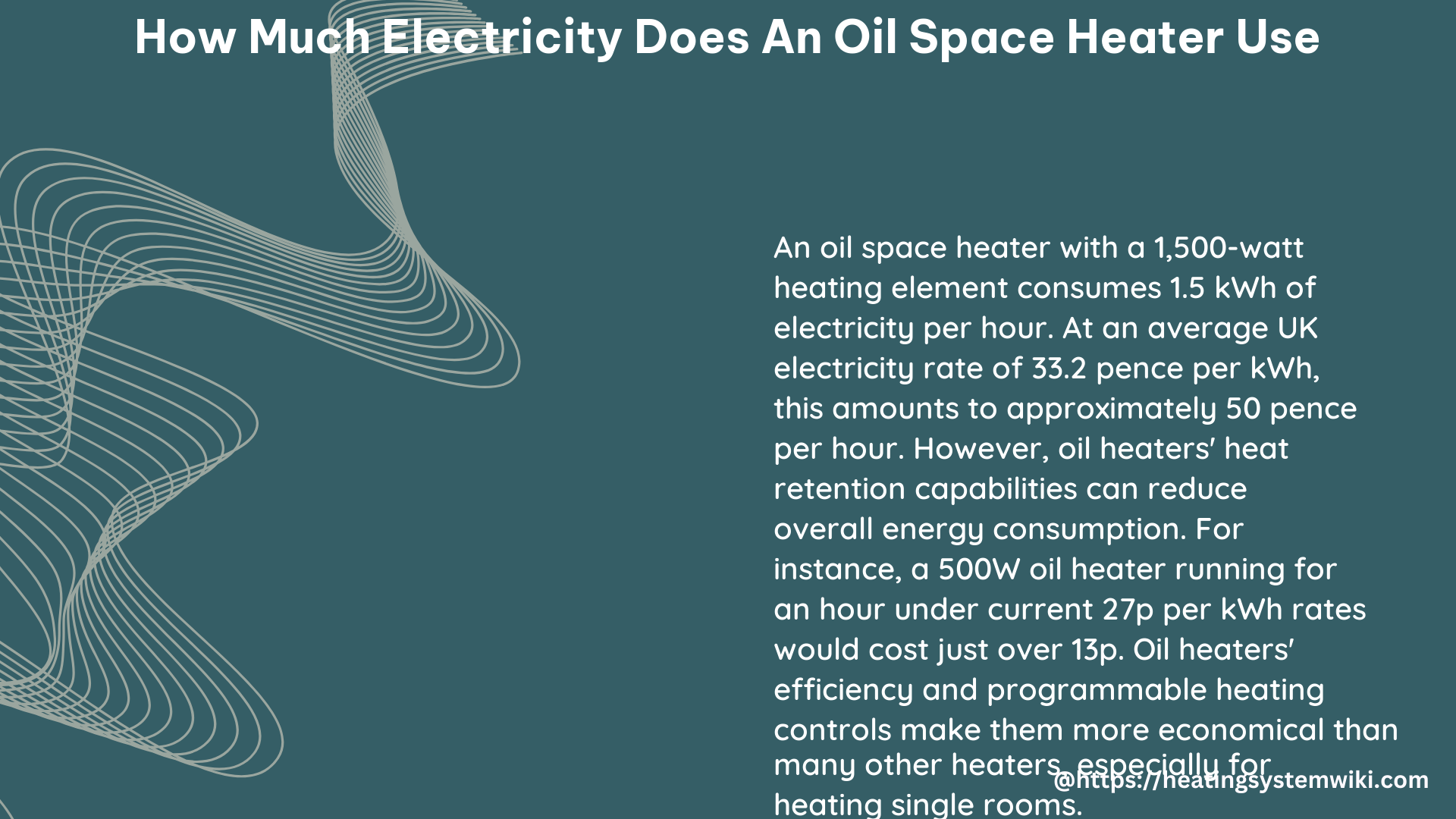An oil-filled space heater is a popular choice for supplemental heating in homes and offices due to its efficient heat distribution and safety features. These heaters use electricity to warm up the oil inside the unit, which then radiates heat into the surrounding area. The amount of electricity consumed by an oil space heater depends on several factors, including the wattage of the heating element, the duration of use, and the electricity rate in your local area.
Technical Specifications of Oil Space Heaters
- Heating Element Wattage: The maximum power rating of the heating element in an oil space heater is typically 1,500 watts, although some models may have lower settings of 700 or 800 watts.
- Power Consumption: When the heating element is turned on, the heater is consuming power at the selected wattage rate. For example, a 1,500-watt heater running at full power will consume 1.5 kilowatts of electricity per hour.
- Electricity Rates: The cost of running an oil space heater depends on the electricity rate in your local area. The average nationwide electricity rate in the United States is around $0.12 per kilowatt-hour (kWh). At this rate, running a 1,500-watt heater at full power would cost approximately $0.18 per hour, while a 700-watt heater would cost around $0.08 per hour.
Calculating the Cost of Running an Oil Space Heater

To calculate the cost of running an oil space heater, you can use the following formula:
Cost = Power consumption (in watts) x Hours of operation ÷ 1000 x Electricity rate ($/kWh)
For example, if you have a 1,500-watt oil heater and you run it for 8 hours a day at an electricity rate of $0.12/kWh, the cost would be:
Cost = 1500 watts x 8 hours ÷ 1000 x $0.12 = $1.44 per day
This means that running a 1,500-watt oil space heater for 8 hours a day would cost approximately $1.44 per day, or $43.20 per month (based on 30 days).
Factors Affecting Electricity Consumption
Several factors can influence the electricity consumption of an oil space heater:
- Wattage Setting: Heaters with lower wattage settings (e.g., 700 or 800 watts) will consume less electricity than those running at the maximum 1,500-watt setting.
- Usage Duration: The longer the heater is in use, the more electricity it will consume. Adjusting the runtime or using a timer can help manage energy usage.
- Room Size: Larger rooms may require the heater to run for longer periods to maintain the desired temperature, leading to higher electricity consumption.
- Insulation and Drafts: Poorly insulated rooms or those with drafts will require the heater to work harder, increasing electricity usage.
- Thermostat Settings: Maintaining a consistent, moderate temperature setting can help optimize energy efficiency and reduce electricity costs.
Comparison to Other Heating Options
When compared to other heating options, oil space heaters can be a relatively energy-efficient choice, especially for supplemental heating in specific rooms or areas. However, their electricity consumption can still be significant, and it’s important to consider the overall cost of operation, as well as the heating needs of your space.
Conclusion
Oil space heaters can be a convenient and effective way to provide supplemental heating in your home or office. By understanding the technical specifications and factors that influence their electricity consumption, you can make informed decisions about their use and manage your energy costs effectively.
